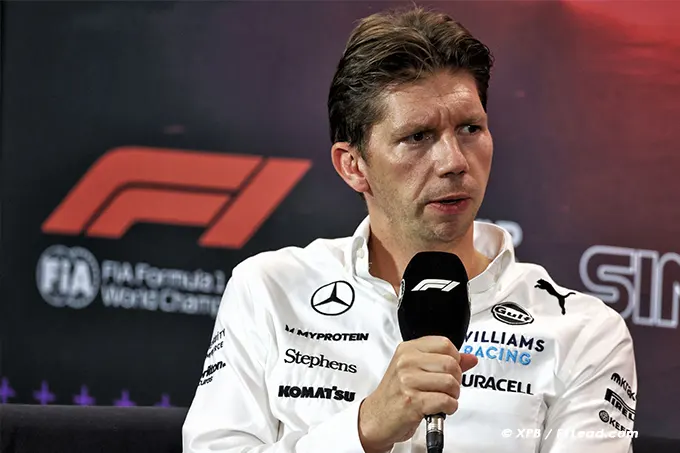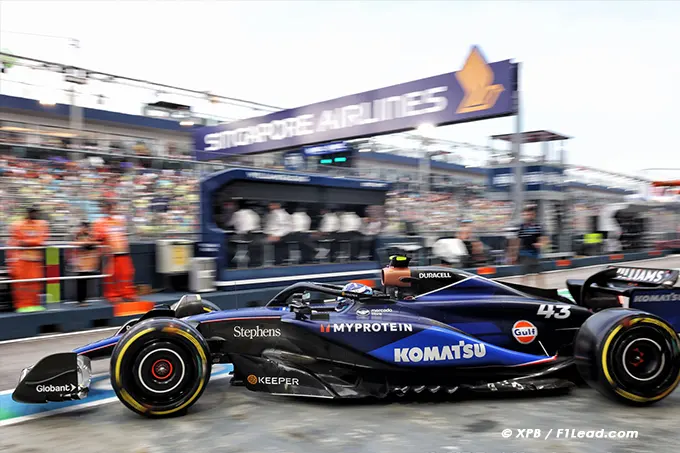Grid penalties persist in F1, shaping races as strategic tools for teams, despite frequent changes.
It’s a statistic that raises questions. In the last 12 races, grid penalties have been almost ubiquitous, with exceptions on only three occasions. Whether due to engine penalties, driving errors, or other infractions, the starting grid on Saturday rarely mirrors that of Sunday.
Should we then consider making the starting grid clearer or more comprehensible for viewers? Or is there simply no better alternative?
James Vowles, the head of Williams F1, muses on this issue…
“The most recent penalty, I believe, was Lewis with an engine penalty. But before that, I think one of the Alpine drivers [Ocon] had a different issue. It’s intriguing when you’re in such a tight battle at the back of the grid, and you’re starting from the back… you’re essentially rolling the dice by trying a completely different setup, and that’s why they take these penalties. They don’t do it because they want to add technical components. I know Lewis did, but he’s an exception, and it creates a very different dynamic in the race and more learning opportunities.”
“From that perspective, the race becomes a bit more disturbed or lively—more so than if drivers were lined up on the grid in the intended order. I don’t think that’s necessarily a bad thing. I think with engine penalties, we’re not in a bad position right now. With four power units on the grid, you see cars quite close together that still want to hold their position on the grid. The midfield is so tight that if you’re at the back, you have to try something different.”
For Fred Vasseur, grid penalties are a strategic element planned from the beginning of the year by teams. He also sees no urgent need to overhaul the regulations.
“Each case is different, but if you look at it now, we are at the 17th race of the calendar, and I’m not sure many drivers have taken penalties just for comfort or for the sake of future performance. We’re all on track to complete the season with four engines. We might not achieve it, but it’s the right limit. Now, you have the choice to start from the pit lane for comfort or performance, etc. But I think that’s marginal.”
“Over the course of the season, we haven’t had much to grapple with. Maybe it was more a coincidence of the track, because of accidents. And so in each case, it’s very different. I think some incidents are due to crashes, others to engines. But we are at the limit. And no, it’s not a drama for me.”
Should the implementation of cost caps for V6 engines not lead to the cancellation of grid penalties in the event of power unit part changes? After all, a team would already be financially penalized by exceeding the quota…
James Vowles sheds light on the matter…
“It’s about two different things, in my opinion. So you’re right, the budget cap on the engine is a good thing. It’s more sustainable than in the past. To be clear, their revenue stream is very minor, but it allows for control of expenses in that regard.”
“But I think by 2026… You want engine manufacturers to continue aiming for a reliable engine. You can’t just throw engines onto the grid because the teams that have them will always suffer in terms of expenses. That’s what they’re looking for anyway. So, in my view, having penalties in place with a reasonable number of units for the year is actually the goal that every team wants to achieve anyway.”
Frédéric Vasseur, who heads a team that is its own engine manufacturer, finally raises a significant objection on the subject.
“I’m not sure I understand the question because the financial regulation concerns the engine manufacturer and the penalty concerns the team. For Mercedes, for example, or for us, it would be a financial regulation for Ferrari and a penalty for us. I’m not sure we can make that confusion.”

- You may also like>McLaren Rear Wing Drama: FIA Defends ‘No Excess Furore’
- Also make sure you follow us on social media>Facebook and>Twitter
Grid Penalties: Essential Strategy, Say F1 Teams Grid Penalties: Essential Strategy, Say F1 Teams
